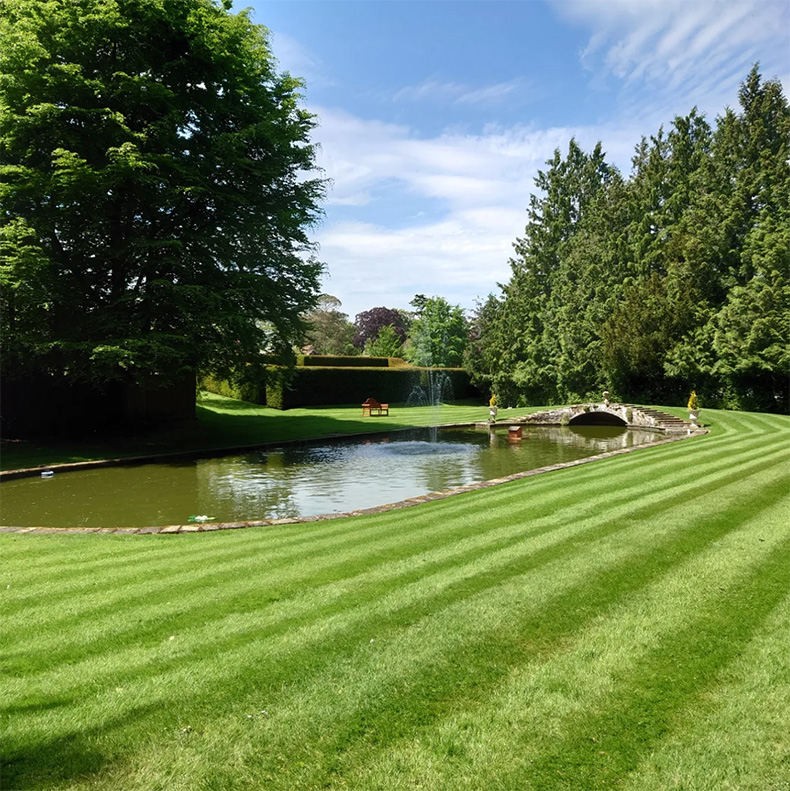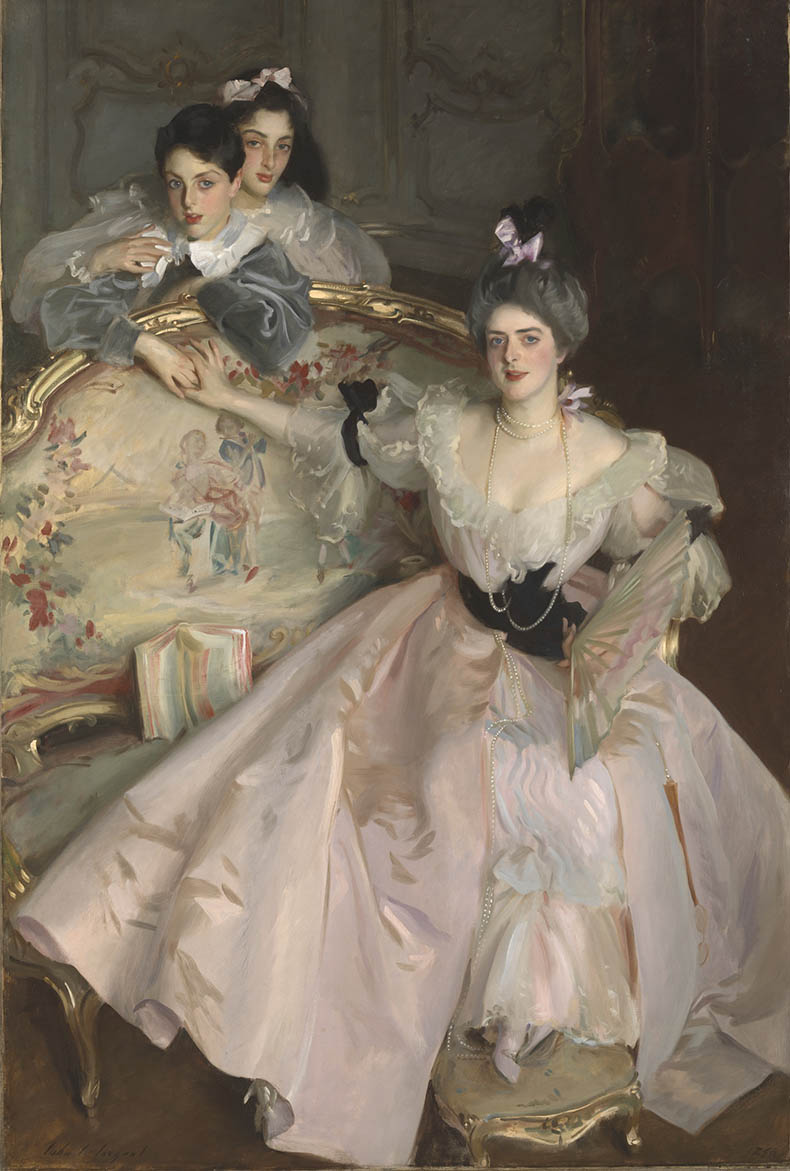In May this year, after a blue plaque dedicated to my great-grandmother Adèle Meyer (1862–1930), who established the first rural health centre in England, was unveiled in Newport, Essex, I revisited Shortgrove, the nearby family home that was acquired by her husband Carl in 1903. Adèle wrote to her son Frank at Eton, ‘We have not yet recovered from the shock of delight at Shortgrove being ours and we enrolled among the “landed gentry” of England. It is a joyful feeling to possess a home of one’s own at last.’
A memorial inscription in Newport Church to Giles Dent, son of a London merchant, confirms that Shortgrove Hall was built in 1684, then altered for Henry O’Brien, 7th Earl of Thomond between 1712 and 1727. It passed to Thomond’s nephew, Percy Wyndham, who succeeded as 8th Earl of Thomond in 1756. On Percy’s death in 1774, the estate was handed over to his uncle, George O Brien, 3rd Earl of Egremont of Petworth House, Sussex where furnishings from Shortgrove include a portrait of the 8th Earl, Dutch 17th-century landscapes, early 18th-century looking glasses with the O’Brien armorials and Chippendale furniture. In 1802, Egremont’s brother sold Shortgrove to Joseph Smith, Secretary to William Pitt the Younger. The property remained in the Smith family until 1889 and the estate then changed hands twice before it was bought for £60,000 by my great grandfather Carl Meyer (1851–1922).
In 1872, Meyer emigrated to London from Hamburg with a cousin by the name of Behrens, to work initially as a translator for N.M.Rothschild. He later represented Rothschild interests in South Africa and became the Deputy Chairman of De Beers, before leaving the company to work as the Director of the National Bank of Egypt. A passionate patron of the arts, Meyer gave the first major donation to the National Theatre, a total sum of £70,000. His generosity was rewarded in 1910 by his elevation to the first baronet of Shortgrove.

The Edwardian swimming pool built for Carl Meyer in 1905. Photo: the author
In this house my great-grandparents entertained their extended Anglo-German family including Adèle’s niece Sylvia Thompson (1902–1968) whose bestselling novel The Hounds of Spring (1926) described Meyer family life. Sylvia recalled, ‘All, or nearly all, my first eighteen Christmas’s, and August and September holidays were at Shortgrove. The beauty of the house, its serenity and space, formed my taste and held my affections.’
Adèle, meanwhile, engaged with the local Newport community campaigning for education, housing, health, clothing, safety, exercise and women’s suffrage. She recognised the educational role of the performing arts and encouraged her own children and wider family to act, sing, and speak in public, raising funds for worthy causes.
The Meyers shared the Shortgrove estate and beautiful gardens with the local community, hosting the local fishing club and providing space for summer schools. Every August for seven years Adèle organised a three-week vacation school for young Newport children. This enabled parents and older children to bring in the harvest whilst their younger siblings were constructively occupied.
Adèle’s philanthropy was partly funded by profits from the sale of carnations, including a newly developed pink variety named ‘Lady Meyer’, the colour perhaps inspired by the satin Worth dress in which Adèle was painted by Sargent in 1896. Yet, in 1910, a year after publishing The Makers of Our Clothes in collaboration with Clementina Black, she described herself as ‘a humble social worker’ with experience of visiting ‘homes of the slum-dwellers in our large and small towns’.

Mrs. Carl Meyer and her Children (1896) John Singer Sargent. Photo: © Tate, London
The Meyers’ engagement with the Newport community was curtailed by the outbreak of war in 1914 when their German origin aroused suspicion and they were accused of hoarding tea and consuming much-needed fuel for growing carnations. Shortgrove was advertised for sale in 1915 but only sold in 1924, two years after Carl’s death. Then in 1966, the house was destroyed by fire in an insurance fraud involving the Kray brothers. A modern house was built on the original foundations in 2000 as a family home while the original stables were converted into residences. The early 18th-century walled gardens, developed by the Meyers to include an Edwardian swimming pool, the best rose garden in the east of England as well as numerous orchards that were an important source of fruit during the Great War, have been lovingly restored and maintained by the present occupants of North House.
Yet I was horrified to discover that the glorious Shortgrove setting is now at risk of being developed by a new German owner Tillman Behrens, who has bought much of the estate and plans to convert existing farm buildings for housing. The local council are granting permission despite the Grade 2 designation of the historic landscape. It is ironic that the estate which Carl and Adèle did so much to preserve as a local amenity is now threatened by a German developer who bears the same name as Carl’s travelling companion in 1872 and the editor of Apollo who commissioned this article.

The historic estate that’s next on the demolition list
Shortgrove Hall in October 1903 from Elsie Meyer’s photograph albums
Share
In May this year, after a blue plaque dedicated to my great-grandmother Adèle Meyer (1862–1930), who established the first rural health centre in England, was unveiled in Newport, Essex, I revisited Shortgrove, the nearby family home that was acquired by her husband Carl in 1903. Adèle wrote to her son Frank at Eton, ‘We have not yet recovered from the shock of delight at Shortgrove being ours and we enrolled among the “landed gentry” of England. It is a joyful feeling to possess a home of one’s own at last.’
A memorial inscription in Newport Church to Giles Dent, son of a London merchant, confirms that Shortgrove Hall was built in 1684, then altered for Henry O’Brien, 7th Earl of Thomond between 1712 and 1727. It passed to Thomond’s nephew, Percy Wyndham, who succeeded as 8th Earl of Thomond in 1756. On Percy’s death in 1774, the estate was handed over to his uncle, George O Brien, 3rd Earl of Egremont of Petworth House, Sussex where furnishings from Shortgrove include a portrait of the 8th Earl, Dutch 17th-century landscapes, early 18th-century looking glasses with the O’Brien armorials and Chippendale furniture. In 1802, Egremont’s brother sold Shortgrove to Joseph Smith, Secretary to William Pitt the Younger. The property remained in the Smith family until 1889 and the estate then changed hands twice before it was bought for £60,000 by my great grandfather Carl Meyer (1851–1922).
In 1872, Meyer emigrated to London from Hamburg with a cousin by the name of Behrens, to work initially as a translator for N.M.Rothschild. He later represented Rothschild interests in South Africa and became the Deputy Chairman of De Beers, before leaving the company to work as the Director of the National Bank of Egypt. A passionate patron of the arts, Meyer gave the first major donation to the National Theatre, a total sum of £70,000. His generosity was rewarded in 1910 by his elevation to the first baronet of Shortgrove.
The Edwardian swimming pool built for Carl Meyer in 1905. Photo: the author
In this house my great-grandparents entertained their extended Anglo-German family including Adèle’s niece Sylvia Thompson (1902–1968) whose bestselling novel The Hounds of Spring (1926) described Meyer family life. Sylvia recalled, ‘All, or nearly all, my first eighteen Christmas’s, and August and September holidays were at Shortgrove. The beauty of the house, its serenity and space, formed my taste and held my affections.’
Adèle, meanwhile, engaged with the local Newport community campaigning for education, housing, health, clothing, safety, exercise and women’s suffrage. She recognised the educational role of the performing arts and encouraged her own children and wider family to act, sing, and speak in public, raising funds for worthy causes.
The Meyers shared the Shortgrove estate and beautiful gardens with the local community, hosting the local fishing club and providing space for summer schools. Every August for seven years Adèle organised a three-week vacation school for young Newport children. This enabled parents and older children to bring in the harvest whilst their younger siblings were constructively occupied.
Adèle’s philanthropy was partly funded by profits from the sale of carnations, including a newly developed pink variety named ‘Lady Meyer’, the colour perhaps inspired by the satin Worth dress in which Adèle was painted by Sargent in 1896. Yet, in 1910, a year after publishing The Makers of Our Clothes in collaboration with Clementina Black, she described herself as ‘a humble social worker’ with experience of visiting ‘homes of the slum-dwellers in our large and small towns’.
Mrs. Carl Meyer and her Children (1896) John Singer Sargent. Photo: © Tate, London
The Meyers’ engagement with the Newport community was curtailed by the outbreak of war in 1914 when their German origin aroused suspicion and they were accused of hoarding tea and consuming much-needed fuel for growing carnations. Shortgrove was advertised for sale in 1915 but only sold in 1924, two years after Carl’s death. Then in 1966, the house was destroyed by fire in an insurance fraud involving the Kray brothers. A modern house was built on the original foundations in 2000 as a family home while the original stables were converted into residences. The early 18th-century walled gardens, developed by the Meyers to include an Edwardian swimming pool, the best rose garden in the east of England as well as numerous orchards that were an important source of fruit during the Great War, have been lovingly restored and maintained by the present occupants of North House.
Yet I was horrified to discover that the glorious Shortgrove setting is now at risk of being developed by a new German owner Tillman Behrens, who has bought much of the estate and plans to convert existing farm buildings for housing. The local council are granting permission despite the Grade 2 designation of the historic landscape. It is ironic that the estate which Carl and Adèle did so much to preserve as a local amenity is now threatened by a German developer who bears the same name as Carl’s travelling companion in 1872 and the editor of Apollo who commissioned this article.
Unlimited access from just $16 every 3 months
Subscribe to get unlimited and exclusive access to the top art stories, interviews and exhibition reviews.
Share
Recommended for you
The rise and fall of Chesterfield House
Once one of London’s most impressive private palaces, the house successfully melded a mix of architectural styles but this wasn’t enough to save it from its fate
How the Versailles of Yorkshire was saved from ruin
Wentworth Woodhouse, the largest stately home in England, has at last been restored to something of its former glory
The glamorous family behind one of Sargent’s best-loved paintings
A personal history of a great painting currently on show in New York